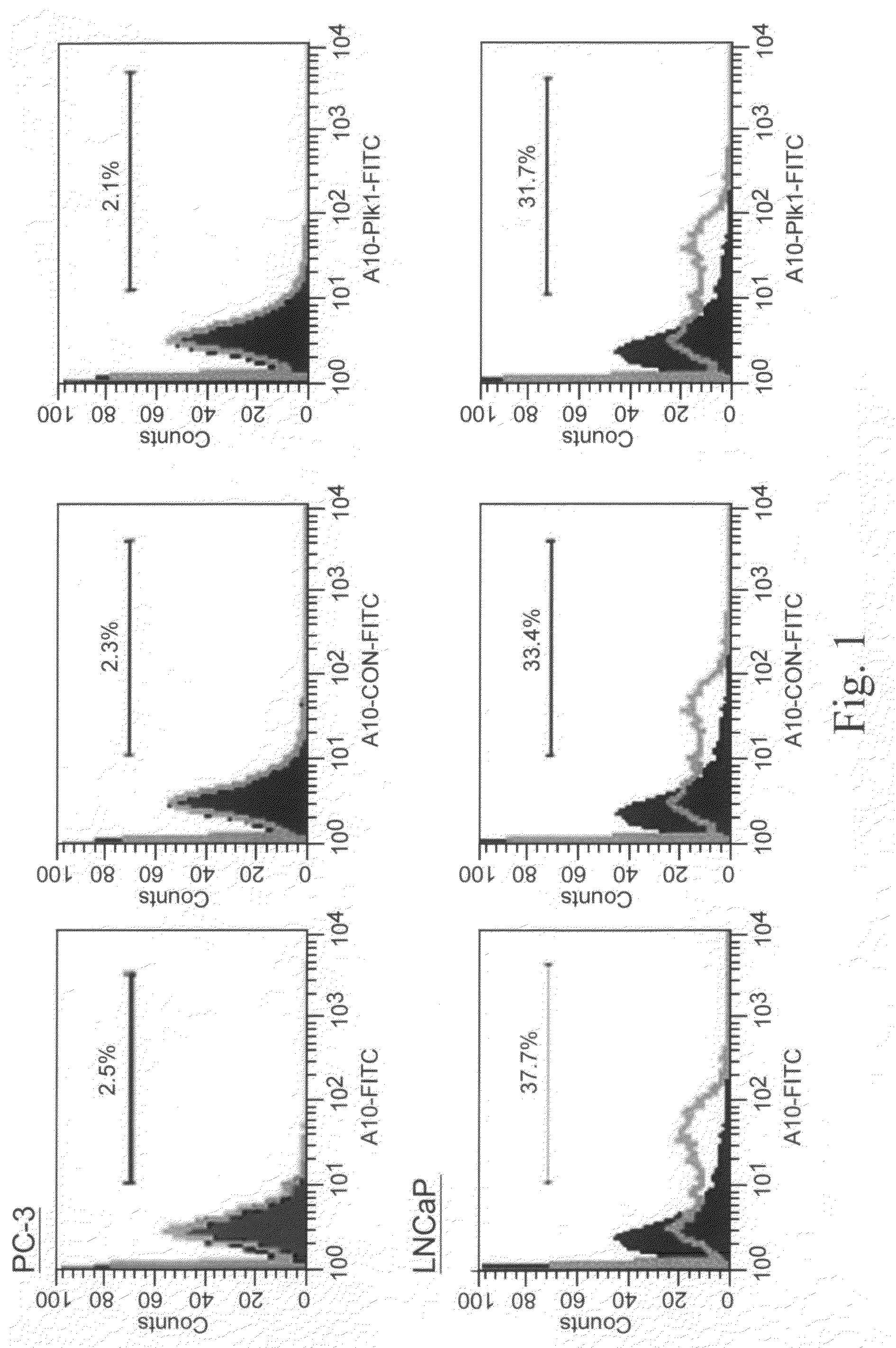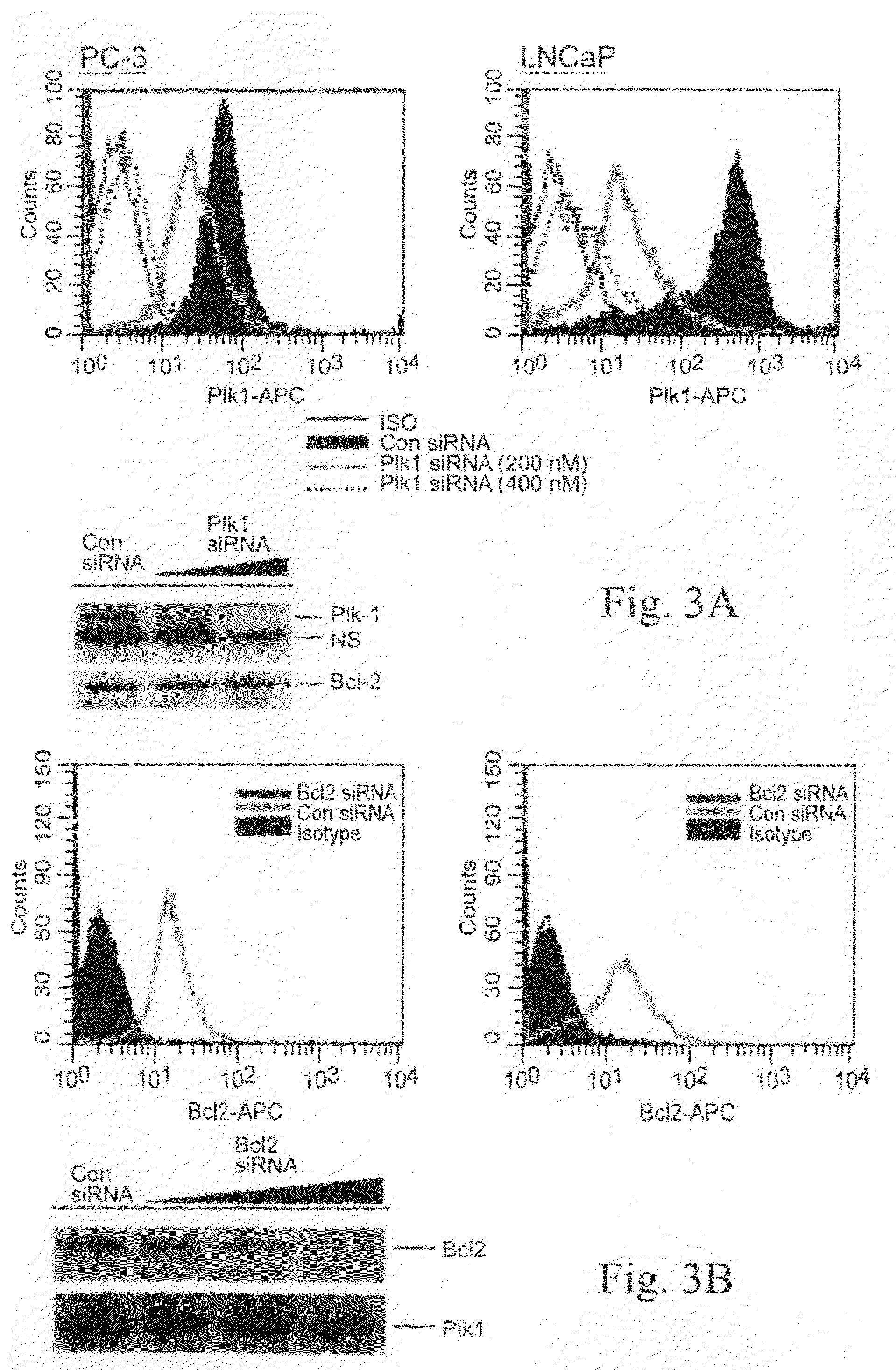Delivery method
a delivery method and sirna technology, applied in the field of interfering rna, can solve the problems of non-specific delivery of sirna to cells, and the disadvantage of most of the approaches described to da
- Summary
- Abstract
- Description
- Claims
- Application Information
AI Technical Summary
Benefits of technology
Problems solved by technology
Method used
Image
Examples
example 1
[0042]As well known in the art, nucleic acid aptamers can be generated by in vitro screening of complex nucleic-acid based combinatorial shape libraries (e.g., >1014 shapes per library) employing a process termed SELEX (for Systematic Evolution of Ligands by EXponential Enrichment). SELEX is an iterative process in which a library of randomized pool of RNA sequences is incubated with a selected protein-containing target, such as a cell surface receptor of interest which is isolated from cells using methods known in the art. RNA binding to the isolated cell surface receptor is then partitioned from non-binding RNA and subsequently amplified through reverse transcription followed by amplification via polymerase chain reaction (RT / PCR).
[0043]Next, this DNA template is used to create an enriched RNA pool through in vitro transcription with a mutant T7 RNA polymerase that allows for the incorporation of 2′ fluoro-modified pyrimidines. These modifications render the RNA more nuclease resi...
example 2
[0045]In this example, illustrated, described, and demonstrated are the following. Provided is a method of targeted delivery of an RNA silencing moiety, the method comprising contacting a nucleic acid molecule and cells in conditions effective for the nucleic acid molecule to deliver the RNA silencing moiety into the cell cytoplasm such that the RNA silencing moiety is bound and processed by Dicer (i.e., is a Dicer substrate). This method involves the use of a nucleic acid molecule comprised of (i) a RNA silencing moiety, comprised of dsRNA comprising a guide strand to be delivered to Dicer; and (ii) and a targeting moiety for binding a surface receptor on a cell which, upon binding, results in cellular internalization to deliver the dsRNA to the cell cytoplasm to be accessible by Dicer, wherein the targeting moiety is an aptamer; and wherein the targeting moiety and at least one strand of the RNA silencing moiety are a contiguous nucleic acid molecule. Also provided is a method for...
example 3
[0067]This is another illustrative example describing and demonstrating the invention. Provided is a method of targeted delivery of an RNA silencing moiety, the method comprising contacting a nucleic acid molecule and cells in conditions effective for the nucleic acid molecule to deliver the RNA silencing moiety into the cell cytoplasm such that the RNA silencing moiety is bound and processed by Dicer (i.e., is a Dicer substrate). This method involves the use of a nucleic acid molecule composed of (i) a RNA silencing moiety, comprised of dsRNA comprising a guide strand to be delivered to Dicer; and (ii) and a targeting moiety for binding a receptor on a cell, wherein the targeting moiety is an aptamer; wherein the targeting moiety and at least one strand of the RNA silencing moiety are a contiguous nucleic acid molecule; and wherein binding of the target moiety to the receptor results in the nucleic acid molecule being internalized into the cell to deliver the dsRNA to the cell cyto...
PUM
| Property | Measurement | Unit |
|---|---|---|
| pH | aaaaa | aaaaa |
| diameter | aaaaa | aaaaa |
| volumes | aaaaa | aaaaa |
Abstract
Description
Claims
Application Information
 Login to View More
Login to View More - R&D
- Intellectual Property
- Life Sciences
- Materials
- Tech Scout
- Unparalleled Data Quality
- Higher Quality Content
- 60% Fewer Hallucinations
Browse by: Latest US Patents, China's latest patents, Technical Efficacy Thesaurus, Application Domain, Technology Topic, Popular Technical Reports.
© 2025 PatSnap. All rights reserved.Legal|Privacy policy|Modern Slavery Act Transparency Statement|Sitemap|About US| Contact US: help@patsnap.com



